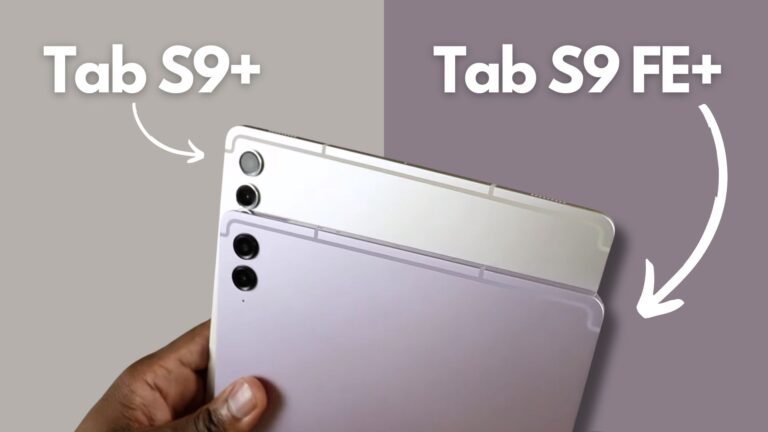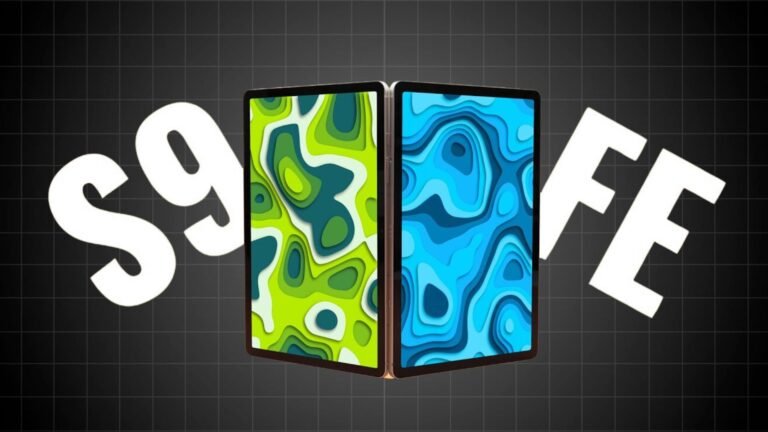Given how similar the iPad 10 and iPad Air 5 appear, you might conclude that you can save $150 and get essentially the same thing. But practically speaking, there are some significant distinctions that set them apart. So let’s determine which is a better fit for you
iPad 10 vs iPad Air 5: Display

The majority of people focus on the display first. Both iPads have a 10.9 inch liquid retina display with the same resolution, same pixel density, same peak brightness, and both are 60 hertz displays.
But then I start seeing some differences.
The iPad Air 5 display has an anti-reflective coating, so it’s a better choice if you wanna use it outside or in environments where you may have to deal with reflections. It’s also a P3 display versus SRGB on the iPad 10. So we’re getting a wider color gamut for more accurate color reproduction. And finally, it’s fully laminated.
If you want to use your iPad outside or you might have to deal with reflections, the iPad Air 5 display is a better option because it has an anti-reflective coating. The display is also P3, as opposed to SRGB on the iPad 10. So, in iPad Air 5 you get accurate color reproduction, wider color gamut, and it has been completely laminated.
Between the display and the combination of the cover glass and touch layer on the iPad 10 there is an air gap. It’s not really something you’re going to notice when you’re watching movies, browsing the web, or playing games, but when you’re using the Apple Pencil, it does make a difference.
iPad 10 vs iPad Air 5: Design

These iPads have a similar design. They both have uniform bezels all the way around, rounded corners, and squared-off edges.
Both iPads have four speaker grills, but only two speakers, one on each side. The iPad Air 5 speakers get louder. The mids and highs have much more presence, and the bass is noticeably stronger. Overall, it’s clear that the iPad Air 5 speakers are the superior option whether you’re playing a game, listening to music, or watching a movie.
You will have to use wireless headphones, USB-C headphones, or an adapter since neither of these iPads has a headphone jack.
We can now see the power button with integrated touch ID for biometric authentication. And this year, the iPad 10 received a USB-C port, allowing for faster charging of both of these iPads. In addition to using external SSDs, you can also connect USB-C hubs and an external display. The iPad 10 supports up to 1080P/60 or 4K/30 on external displays. The iPad Air 5 can go up to 6K/60 hertz.
iPad 10 vs iPad Air 5: Keyboard & Stylus

Support for the Apple Pencil is one of Apple’s most perplexing decisions. The second-generation Apple Pencil, which pairs and charges wirelessly and is stored on the side of the iPad, is therefore compatible with the iPad Air 5.
Only the first-generation Apple Pencil, which has a Lightning connector, is compatible with the iPad 10, which also has a USB-C port. This means that in order to pair and charge the Pencil, you need an adapter and a USB-C to USB-C cable.
Because the iPad Air 5’s keyboard connector is located on the back rather than the side like the iPad 10, it supports different kinds of Magic Keyboards. The traditional one is compatible with the iPad Air 5, and the iPad 10 is compatible with the new Magic Keyboard Folio.
iPad 10 vs iPad Air 5: Camera
As far as the camera systems, they’re identical in terms of the number of cameras, the resolution, the frame rate, 4K, slo-motion, zoom, cinematic stabilization, SMART HDR 3 for photos. You’re essentially getting the same hardware and specs, but of course the two iPads have two different chips with different image signal processors.
“Image Samples Uploading Soon“
iPad 10 vs iPad Air 5: Performance

The iPad Air 5 has the more potent M1 chip with 8GB of RAM, while the iPad 10 has the A14 Bionic with 4GB of RAM. The M1 performs better than the A14 in terms of single-core and multi-core performance.
GPU Benchmarks (Score)
| iPad 10 (4-core GPU) | 12480 |
| iPad Air 5 (8-core GPU) | 21259 |
These are “ just ” benchmark scores, so for the vast majority of users, the differences won’t mean much.
Well, it doesn’t really mean much if you’re just browsing the internet, watching videos, and using social media. On the other hand, the hardware-accelerated H264 and HEVC on the M1, along with a video decode and encode engines, may be useful if you’re doing something like very intensive video editing.
I have not noticed a significant difference when using multiple apps simultaneously in split view, pop-up windows, or sliding windows over one another. Great performance and support for iPadOS 16 are shared by both iPads.
Now, battery life is always interesting because every iPad currently on the market has the same rating: up to 10 hours of web browsing on wifi or watching videos, and up to nine hours if you’re using cellular data.
Price & Conclusion
As we examine the configuration options, I must admit that I wish Apple had improved both of these. The iPad 10 therefore starts at $450, followed by the iPad Air 5 at $600. Additionally, you only get 64GB in both situations. And I believe that at this time, the base model should come with 128GB, and the upgraded models should have 512GB.
If you’re buying from Apple, in the US, you’re paying $450 for the iPad 10, $600 for the iPad Air 5. But on e-commerce websites, you can actually get the iPad Air 5 for $520. So now it’s a $70 difference.
The iPad 10 costs less. It has better battery life. I like the position of the front facing camera. A lot of times I think that the entry level iPad is the better value, but for 70 bucks, I would rather go with the iPad Air 5 with a better and fully-laminated display, better speakers, more processing power, and a much better user experience when it comes to using the Apple Pencil.






